Introduction
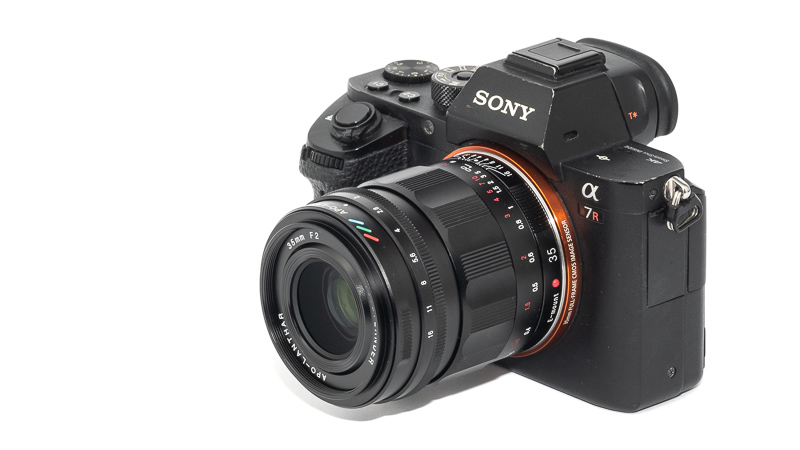
After the 65mm 2.0, 110mm 2.5 and 50mm 2.0 this 35mm 2.0 Apo-Lanthar E is the fourth addition to Voigtländer’s Apo-Lanthar lineup.
From these previous Apo-Lanthar lenses we are used to see very high sharpness and contrast and generally a very high level correction of pretty much all optical aberrations. So we already know what we are in for here, or are there any surprises? Let us find us in this review.
Sample Images
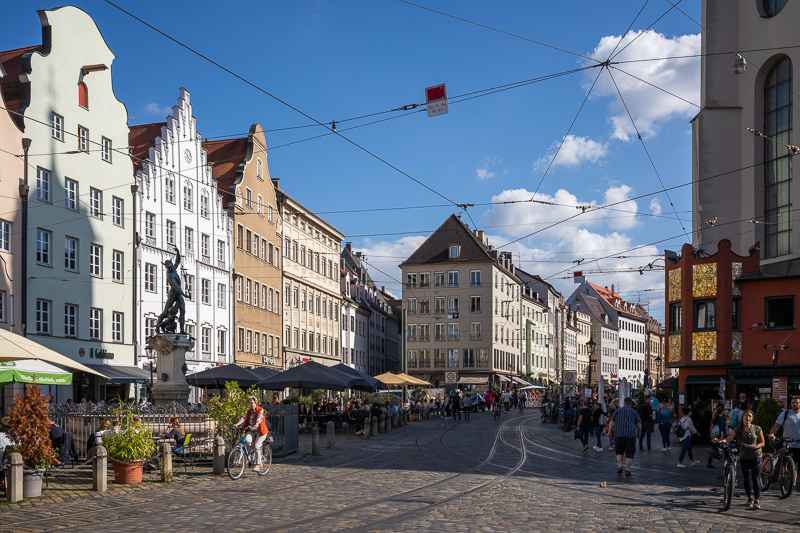
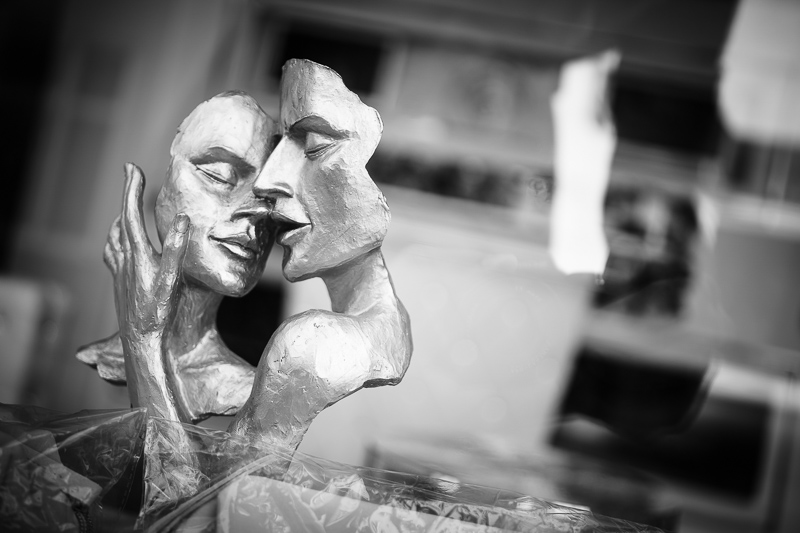
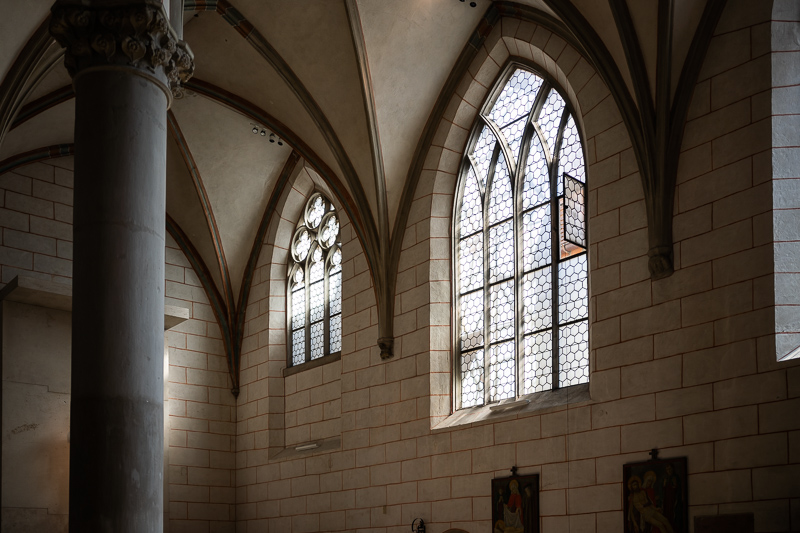
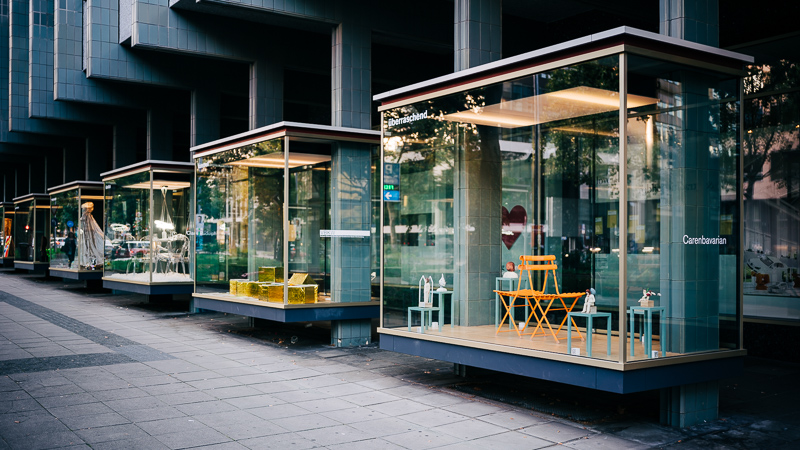
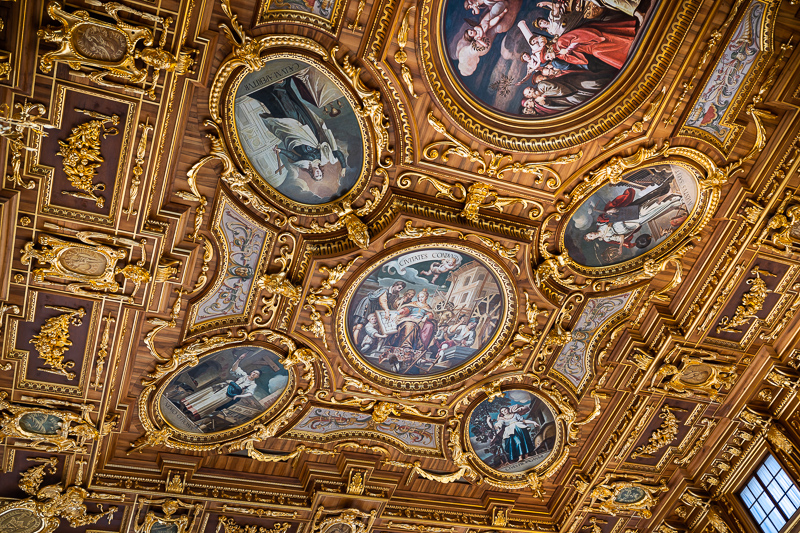
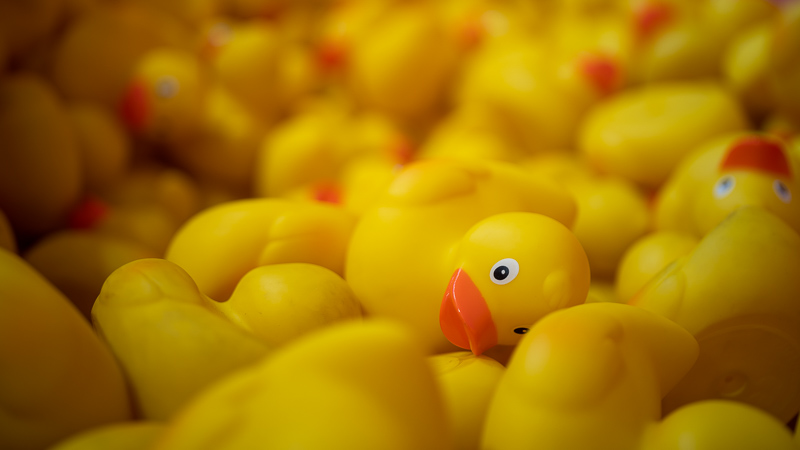
You can find most of the sample images in full resolution here.
Contents
Specifications / Version History
Cosina produces plenty of 35mm lenses under the “Voigtländer” brand and this is already the third native E-mount one we are reviewing here (the other ones being the Voigtländer 35mm 1.2 Nokton SE and the Voigtländer 35mm 1.4 Nokton E Classic). It also comes as M-mount lens – which at first sight seems to have the same optical design – but in fact doesn’t, as I will show you in my review of the M-mount version (coming soon).
The full specifications of the E-mount version are:
-
- Diameter: 63 mm
- Field of view: 62.2° (diagonally)
- Length: 67 mm
- Weight: 353g (without hood, without caps)
- Filter Diameter: 49 mm + 58 mm (in lens hood)
- Number of Aperture Blades: 12 (rounded or straight depending on aperture value)
- Elements/Groups: 11/9

- Close Focusing Distance: 0.35 m
- Maximum Magnification: 1:6.3
- Mount: Sony E
The lens is available from Robert White (UK) | Cameraquest (US) | B&H | ebay.com | ebay.de (affiliate links) and the price is $1149/1099€/£899.
Disclosure
The Voigtlander 35mm 2.0 Apo-Lanthar E was kindly provided free of charge by Robert White/Flaghead for reviewing purpose for a duration of 4 weeks.
Handling/Build quality
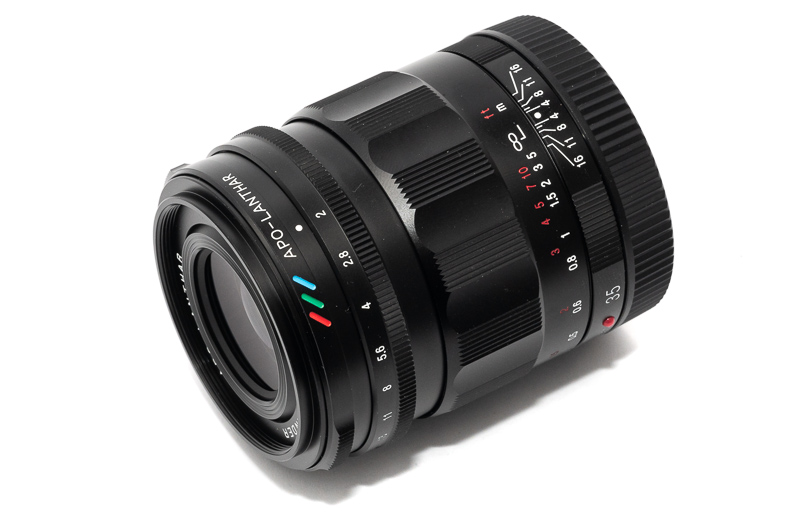
The Voigtlander 35mm 2.0 E looks and feels a lot like its slighly longer 50mm sibling, so if you have already used that lens you will immediately feel at home.
The focus ring has a nice, well dampened resistance and turns about 160° from the minimum focus distance (0.35 m) to infinity. The ring rotates a little past infinity which is a good idea, as we will see in my review of the M-mount version (coming soon).
The aperture ring has 1/3 of a stop click stops (which you can declick by rotating an additional ring at the front of the lens) and turns roughly 100° from f/2.0 to f/16.
The lens has electronic contacts to communicate exif data with your camera and if you wish so the focus magnify will be activated when you turn the focus ring.
The outer casing seems to be made completely from metal and all markings are engraved and filled with paint.
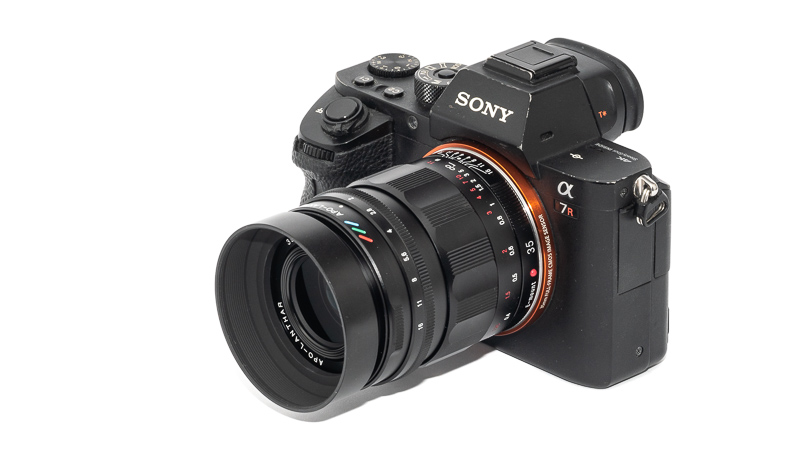
As is usually the case with E-mount lenses (but not M-mount lenses) there is a hood in the package and anohter nice touch: the hood features an additional 58 mm filter thread – which is shared with the 50mm 2.0 – and there is even a second lens cap for this 58 mm thread included.
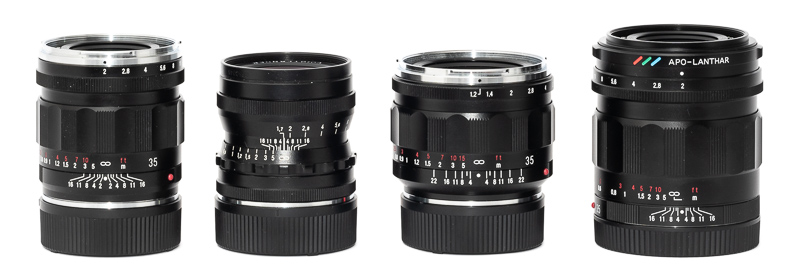
Compared to the M-mount version the E-mount version looks a lot bigger (read: thicker). It is similar in size and weight to the Voigtlander 35mm 1.2 Nokton SE.
Vignetting
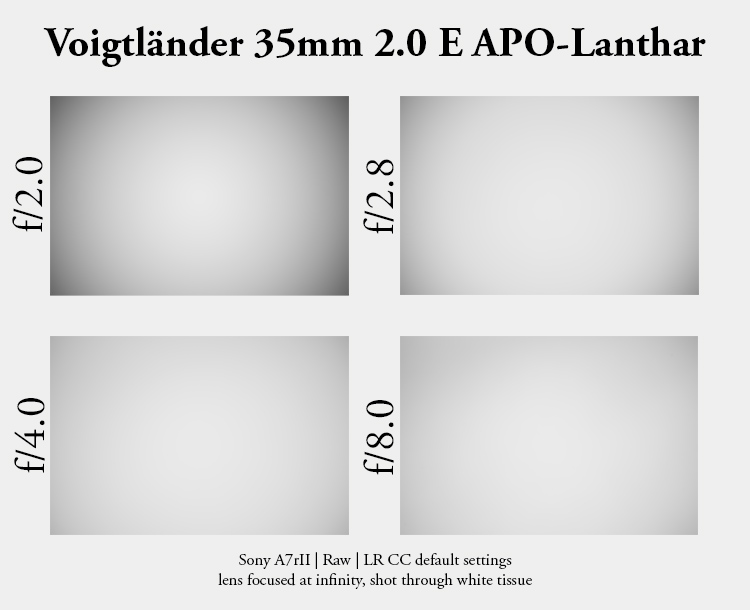
| f/2.0 | 2.8 EV |
| f/2.8 | 2.1 EV |
| f/4.0 | 1.6 EV |
| f/5.6 | 1.5 EV |
| f/8.0 | 1.4 EV |
| f/11 | 1.4 EV |
Wide open I measure almost 3 EV corner shading which is a lot, but similar to the competition. At shared apertures these values are about 0.5 EV better compared to the Voigtlander 35mm 1.2 SE, stopped down they are comparable to the Sony FE 35mm 1.4 GM which means still high.
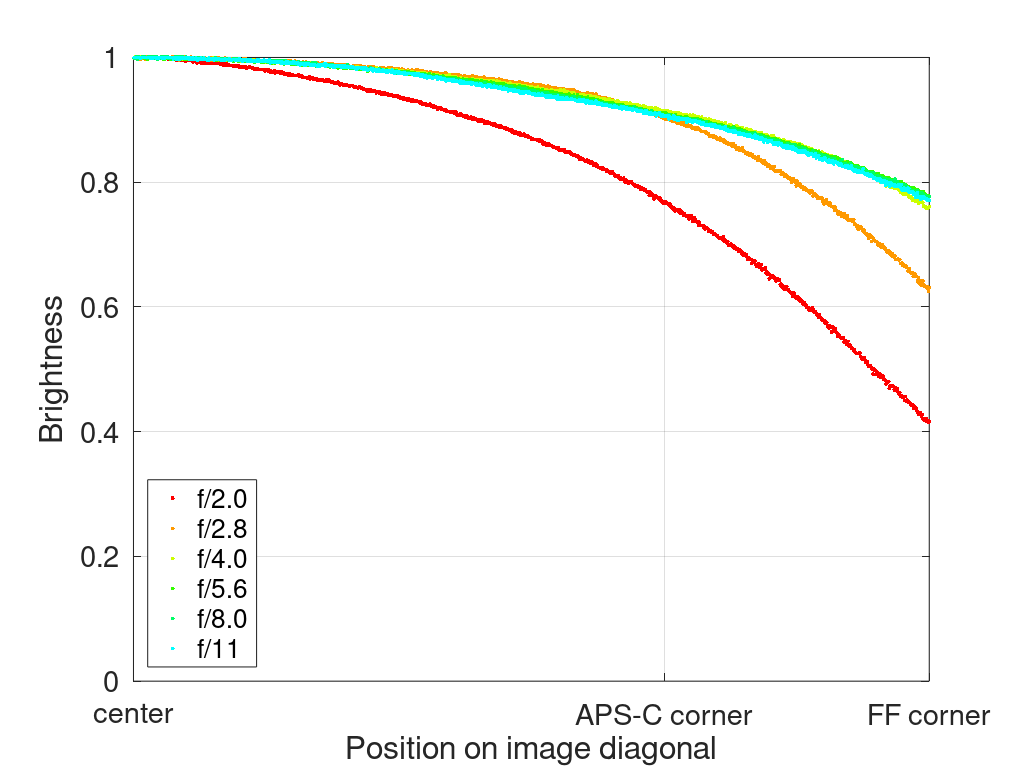
It is recommended to have a look at this article first to get an idea how this brightness graph works.
Sharpness
infinity (42mp Sony A7rII)
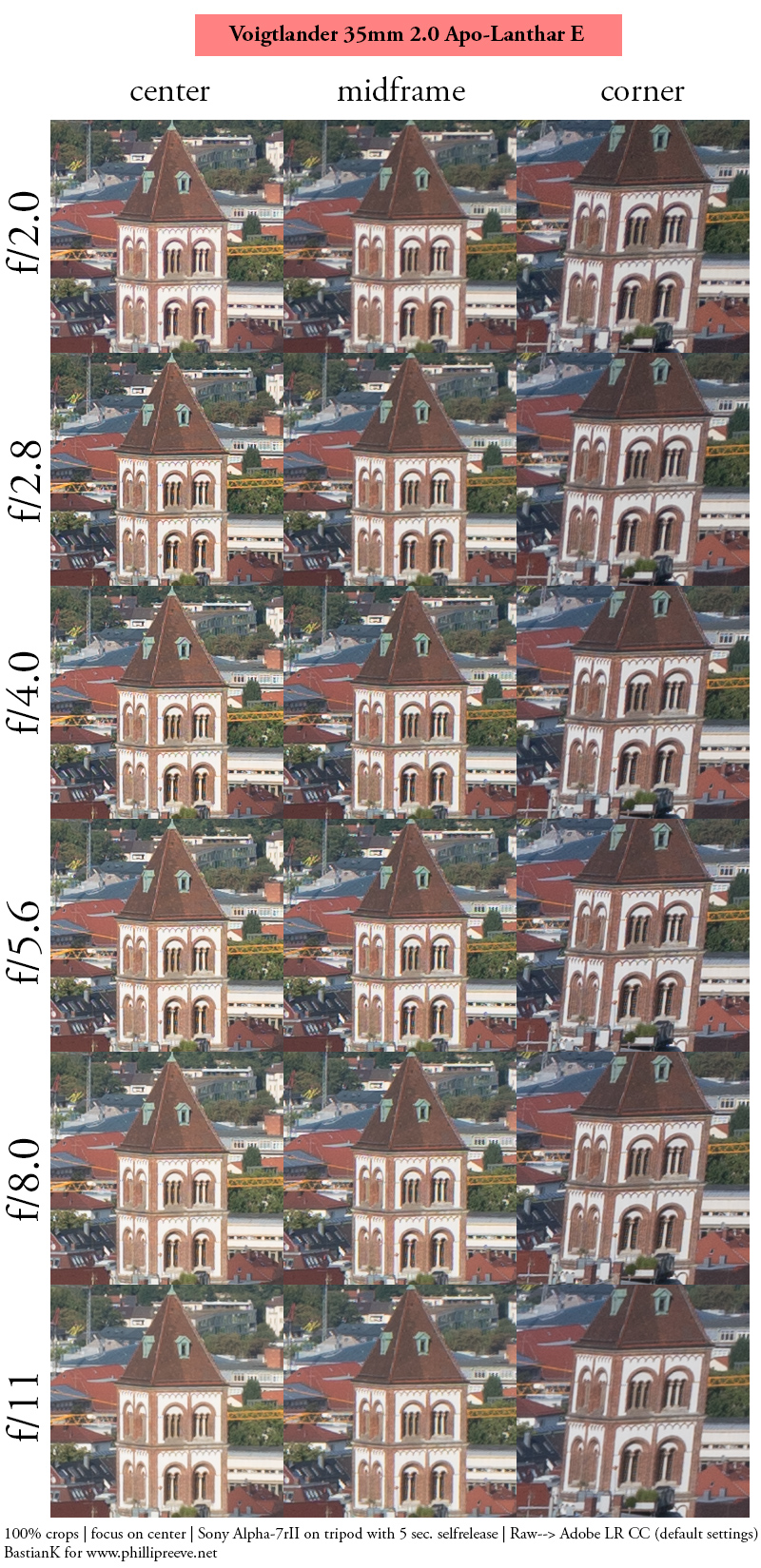
The other Apo-Lanthar lenses showed very impressive results here and the 35mm manages to follow their footsteps easily.
From f/2.0 the resolution is as high as you may ever need it and stopping down is only needed to extend the depth of field with this lens.
The difference at wider apertures will be very noticeable compared to the Zeiss Loxia 35mm 2.0 or legacy 35mm lenses, but differences to the faster, heavier and bigger Sony FE 35mm 1.4 GM or Sigma 35mm 1.2 Art DG DN will be academically at best.
If resolution at infinity is what you care about most and you don’t rely on autofocus this Voigtlander 35mm 2.0 E Apo-Lanthar is clearly the lens you should have a very close look at.
portrait distance (1.0 m)
For portraiture it isn’t so important how flat the field is, it is more interesting to see what the sharpness is like when focused at different parts of the frame to take field curvature out of the equation.
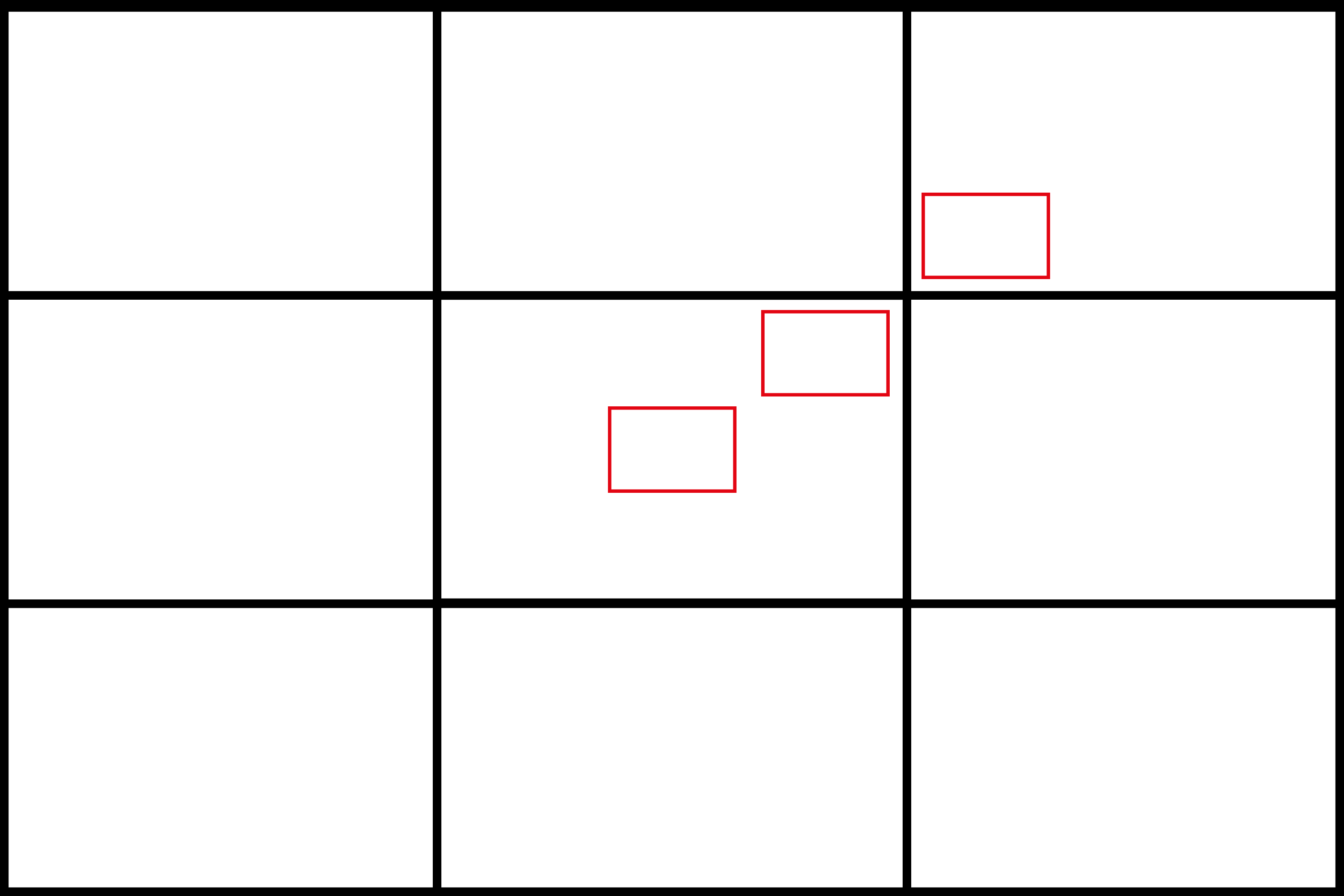
This is what I did here, I refocused for every shot and aperture to get the best possible result at different locations in the frame (center, inner midframe and outer midframe).
Focus distance was roughly 1.0 m and the circle of the dollar bill is more or less the size of a human eye.
100% crops, A7rII
Performance here is very good, even in the outer midframe area you still see lots of Moiré, so no complaints.
close (0.35 m, 1:6.3)
100% crops from center, A7rII
The performance at f/2.0 near and at the minimum focus distance is not that great as there is quite a bit of spherical aberration (softness). I didn’t really expect this.
The good news is that stopping down to f/2.8 is enough to elevate the performance to very good levels. Field curvature is also very low at closer distances.
Flare resistance
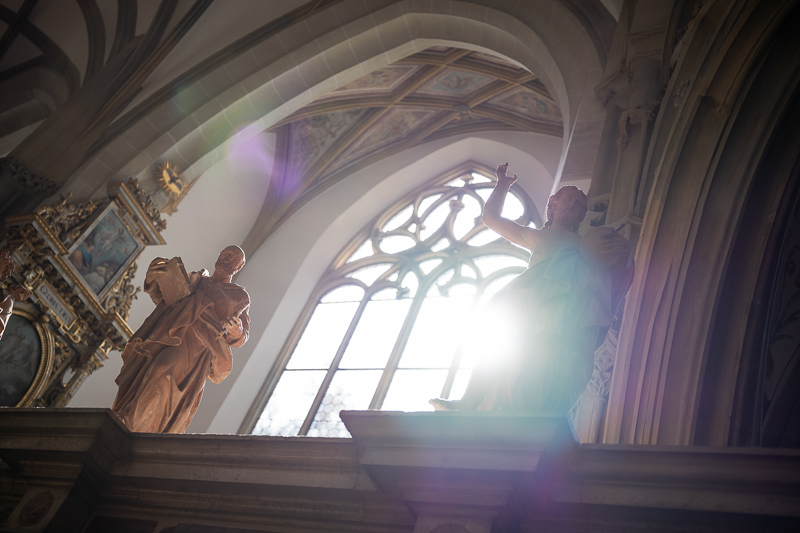
As always evaluating flare is a complex matter since you can get any lens to look bad if you push it hard enough and a slight change of scenario can affect results a lot.
Generally the recent Voigtlander lenses have fared very well in this category, especially when it comes to veiling flare. Unfortunately the picture on top is already worse than anything I managed to create with the 35mm 1.2 or 50mm 1.2 lenses, but let us have a closer look.
Sun outside frame
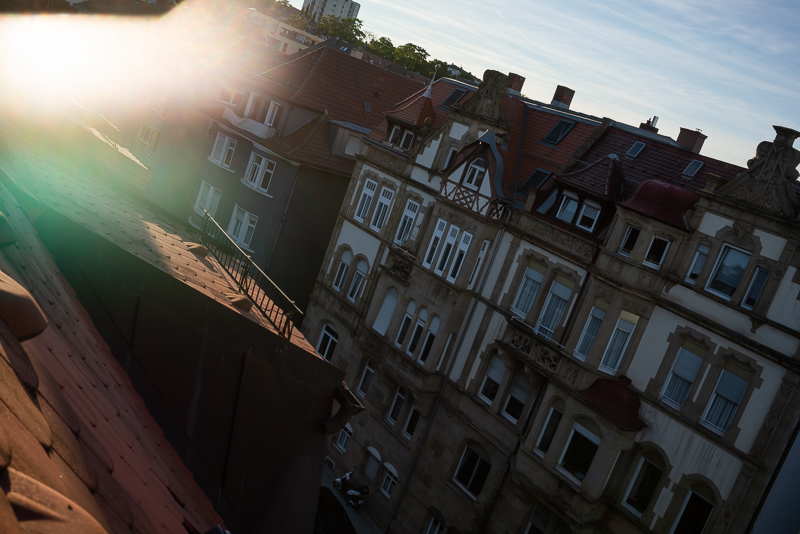
With most lenses there is a very specific position close to the corner of the frame that will lead to a huge flare and the Voigtlander 35mm 2.0 E is no exception.
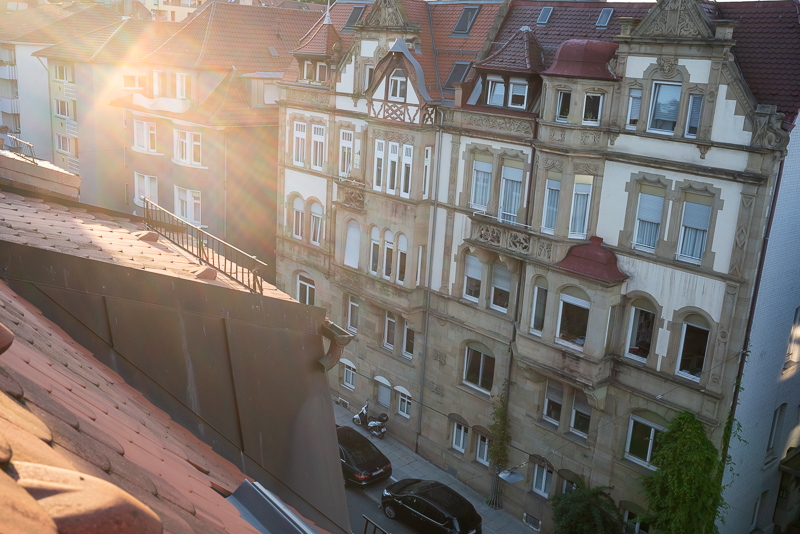
There is another position that leads to what looks like internal reflections, again, the light source needs to be in a very specific position for this, so this isn’t something you should encounter often.
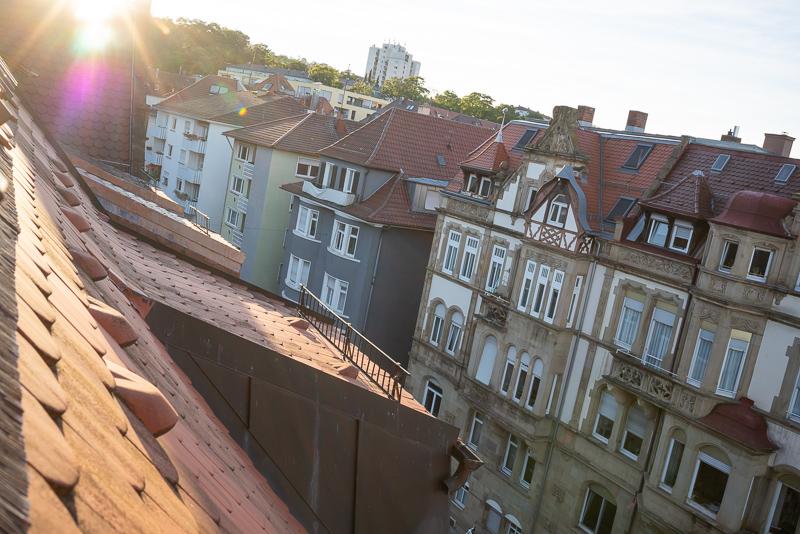
Sun inside frame
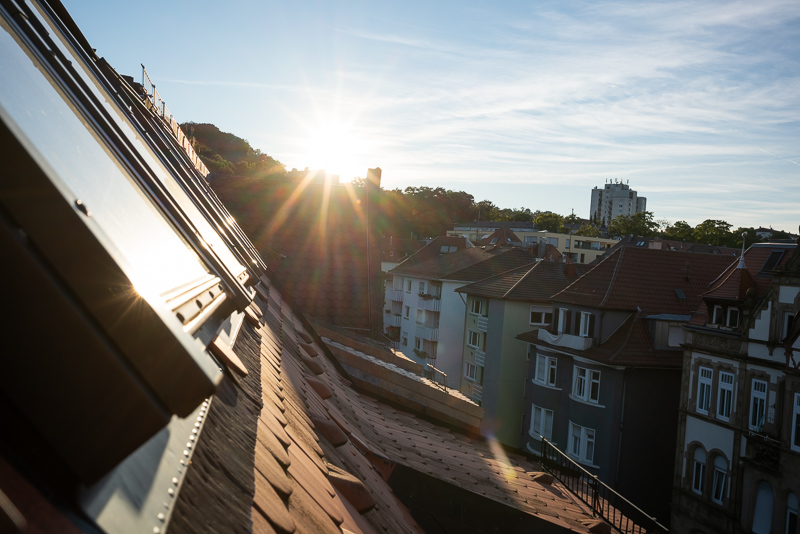
With the sun inside the frame the situation is generally better, but sometimes even sensor reflections appear, which is something I have rarely seen on the Sony A7rII.
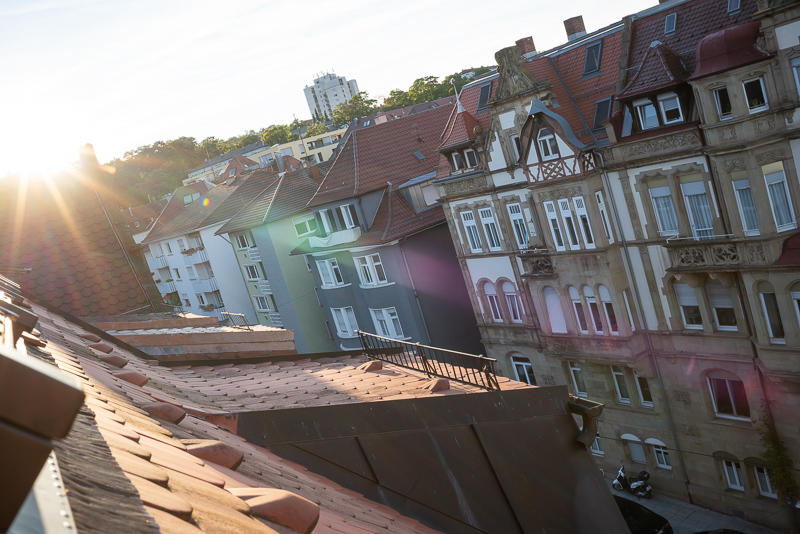
And that green/purple ghosts? Depending on the position of the light source in turns into a streak across the whole frame.
I took many pictures with a strong light source in the frame without any issues. All in all I consider the performance solid, but not great.
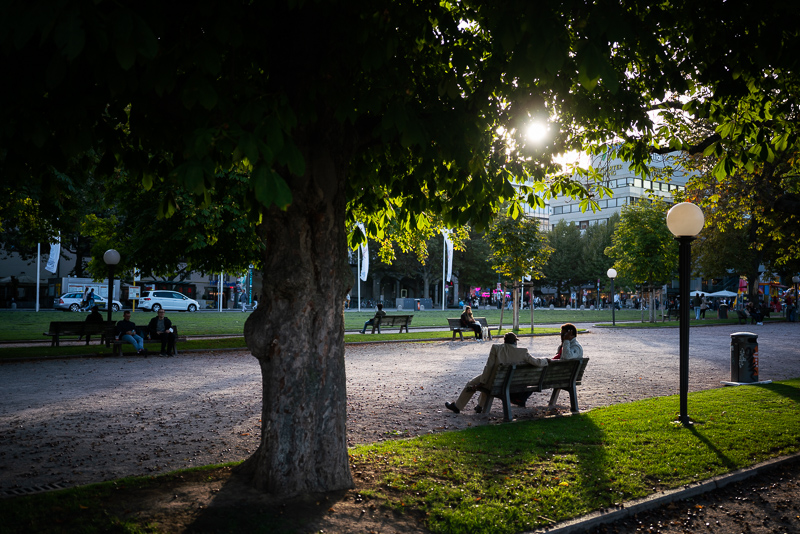
Coma
100% crops from extreme corner, focused on center, A7rII
Taking into account the very good corner sharpness at infinity it doesn’t come as a surprise that coma correction is also really good. If you are looking for a lens for astrophotography keep in mind the high vignetting though, the Sigmas 35mm 1.2 and 40mm 1.4 have about 1 EV less vignetting at f/2.0.
Distortion
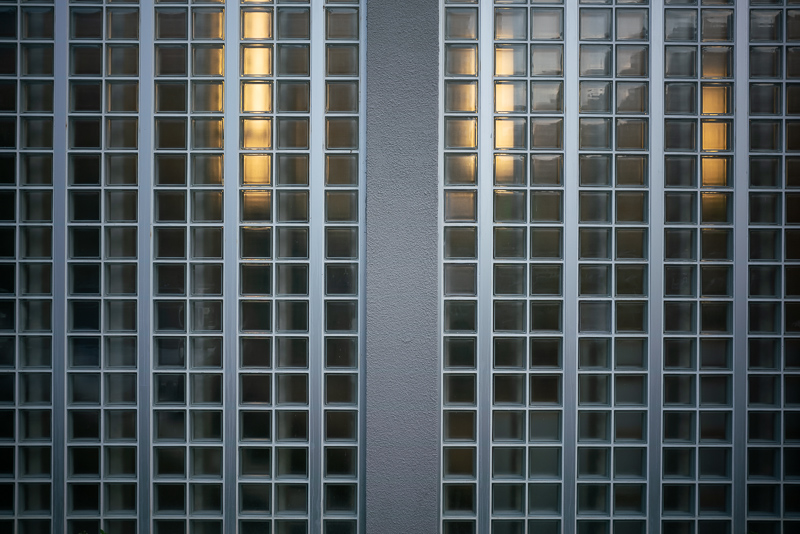
Distortion is hardly visible, but there is a slight waviness close to the corners. Nevertheless, even for architecture pictures I rarely felt the need to correct it.
Bokeh

When it comes to 35mm lenses a maximum aperture of f/2.0 is not that exciting anymore, as these days we have a very high resolving f/1.2 lens with autofocus and even an f/0.95 manual focus lens.
But when it comes to bokeh there is not only quantity, there is also quality, so let us have a closer look – as usual.
Close distance
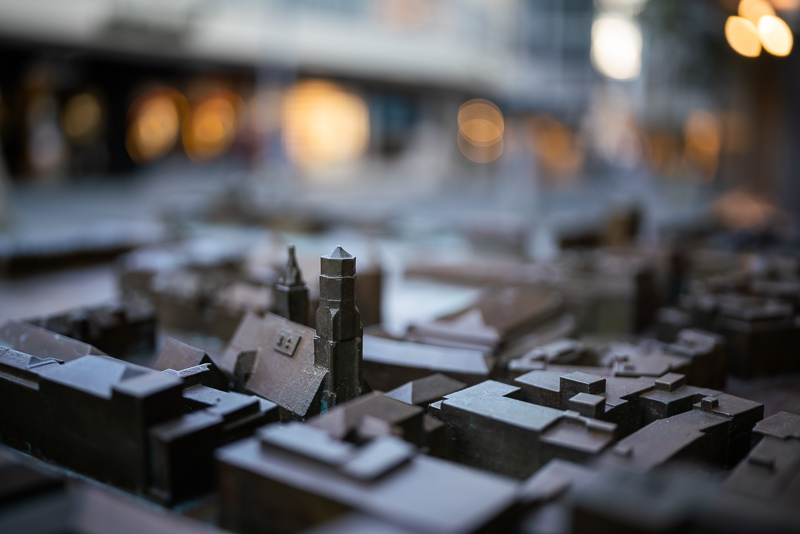
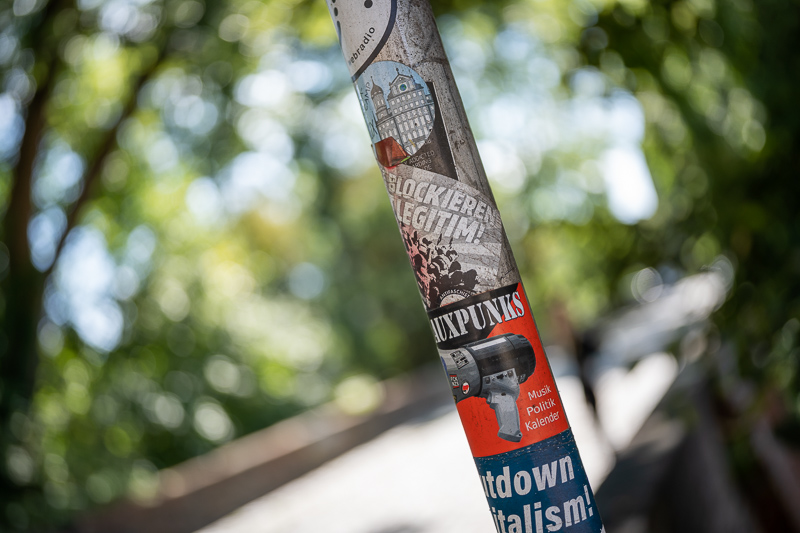
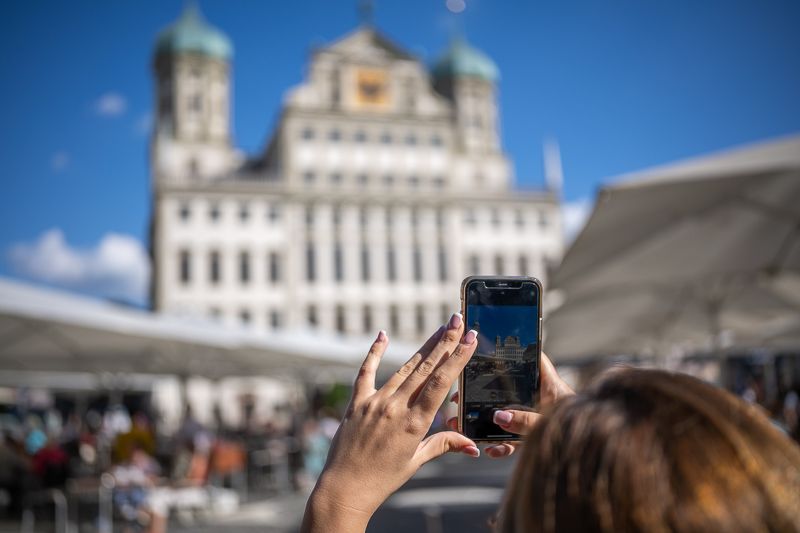
A minimum focus distance of 35 cm is not best in class but it is still nice and lets you get close to your subject.
As is ususally the case in close focus scenarios the bokeh is also generally smooth and non-distracting. Optical vignetting is also visible but not overly distracting.
Mid distance

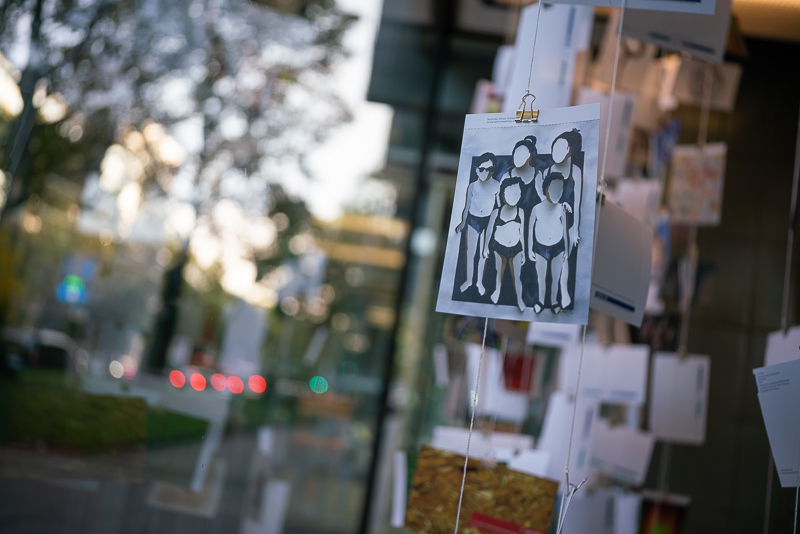
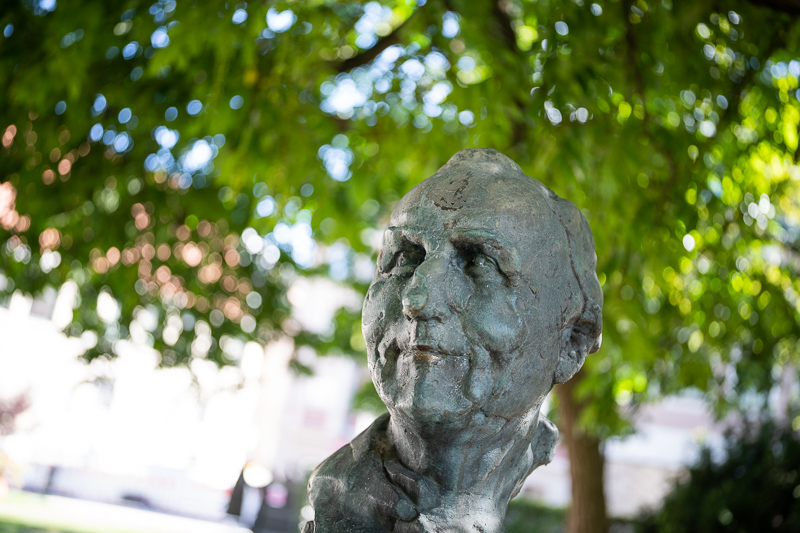
Before the lens arrived at my doorstep I already heard people saying that bokeh is not exactly the lens’ strength and with complex backgrounds this is indeed already noticeable at mid distances. In many of the pictures I took there are double edges visible in the out ot focus areas than can be a little distracting.
Long distance
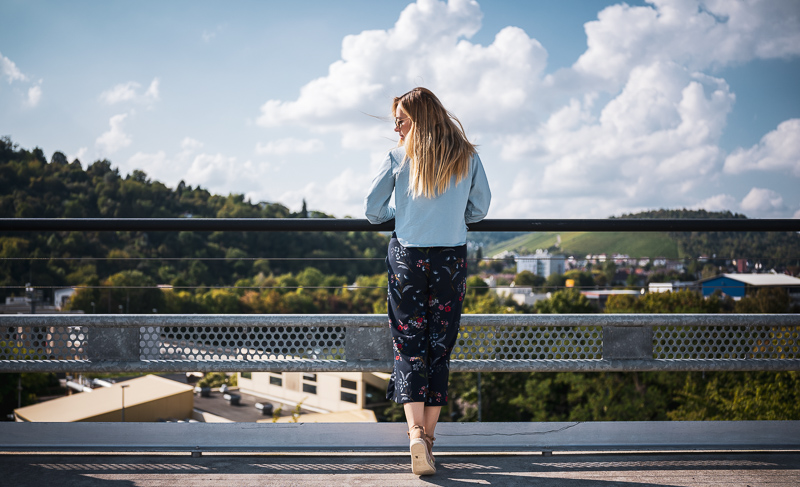
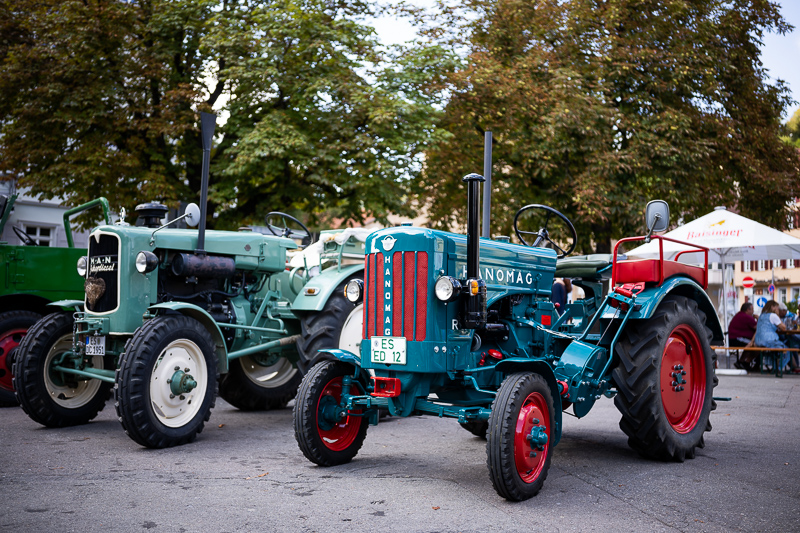
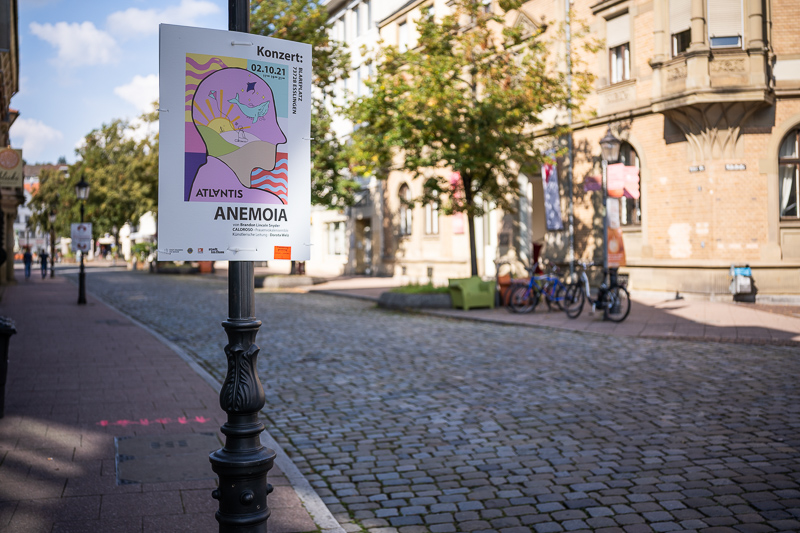
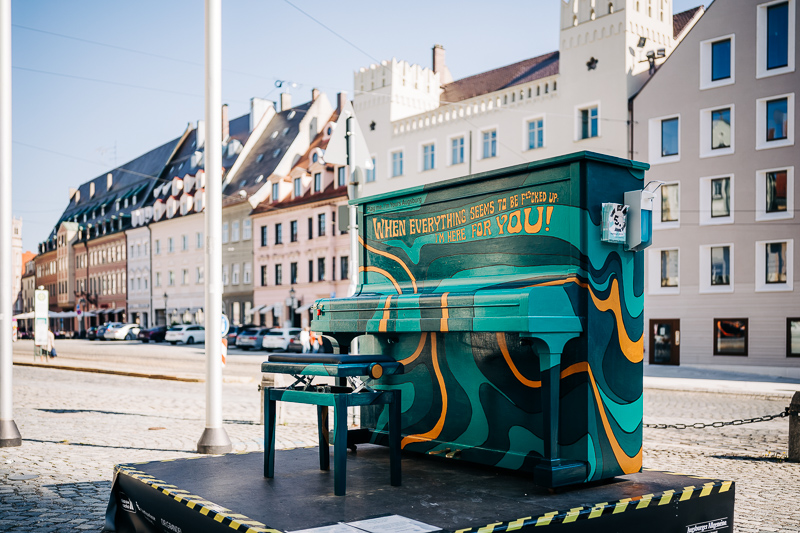
At longer focus distances a maximum aperture of f/2.0 in a 35mm lens doesn’t really cut it for isolating your subject, but we knew that before. Especially the barely-out-of-focus foliage attracts more attention than I like and adds some nervousness to the pictures.
You might have noticed: I am not the biggest fan of the bokeh rendering of this lens, but this was also true for the previous Apo-Lanthar lenses. An almost perfect correction of optical aberrations doesn’t lead to exactly smooth and butterly bokeh (which is more what I like), but we should also keep in mind this is not what the lens has been designed for and there are faster lenses more suitable for that task available.
And in my eyes it still easily wins in this (or pretty much any) department against the Zeiss Loxia 35mm 2.0, which might be considered the direct competitor in the E-mount world.
Sunstars
100% crops from center, A7rII
Like the Voigtlander 50mm 2.0 Apo-Lanthar before this 35mm lens features Cosina’s speciel aperture diaphragm. At f/2.0, f/2.8, f/5.6 and f/16 the opening is perfectly round (no sunstars), at f/4.0 and f/8.0 the blades form a “crown cork” shape (whacky sunstars) and at f/11 they form a perfect dodecagon (sunstars).
Generally, I think the design is ingenious and I would love to see way more lenses using it, but compared to other Voigtlander lenses with only straight blades the sunstars are a little less distinct and they are harder to “control”, as you cannot adjust their strength by stopping down more or less.
As this is a reasonably fast lens and you might also want to use it for some shallower depth of field photography I still consider it a very smart decision to use this diaphragm.
Chromatic aberration
lateral
I checked the amout of lateral CA having the lens attached without electronic connection to the camera to suppress built in correction profiles and they are still close to zero and therefore nothing to worry about.
longitudinal
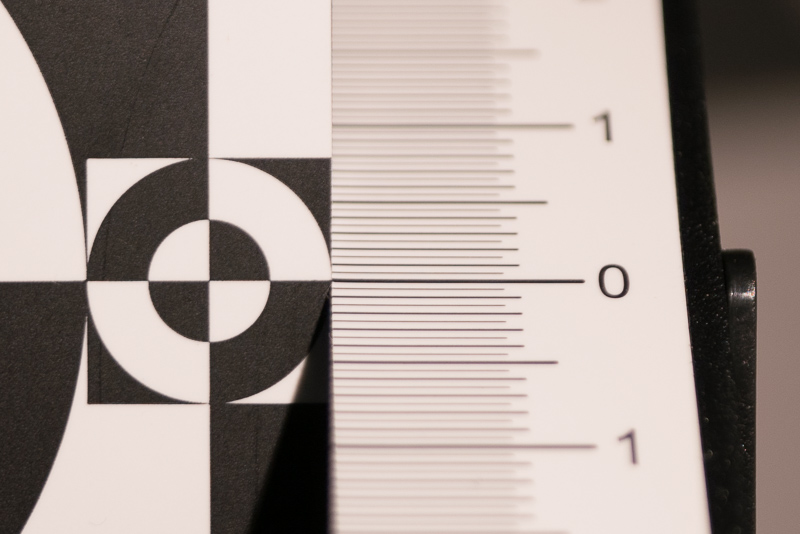
In close focus scenarios longitudinal CA are hardly visible, but they may also be masked by spherical aberration a bit, so we will have a look how the lens performs at longer focus distances.
Sony A7rII/A7III | Voigtlander 35mm 2.0 Apo-Lanthar E | f/2.0
Well… It is not like the performance is bad, but considering the Apo tag on the lens and taking into account the performance of previous Apo-Lanthar lenses I can’t say I am impressed. The apochromatic correction was one of the main selling points of this series and here I simply don’t see it. What makes things worse: the M-mount sample I received performed even worse in this category, so you should not expect this being the worst sample you might possibly get.
To be perfectly honest, I would have not given this lens the Apo designation and I don’t think it performs visible better than the Sony FE 35mm 1.4 GM which is a full stop faster (as I don’t have this lens available anymore I cannot perform a direct comparison though).
Alternatives
Some of you may already have the Zeiss Loxia 35mm 2.0 and think about switching. To those of you my recommendation is as follows: if you only use the lens at f/8.0 to f/11 anyway the upgrade won’t yield you a lot of benefits. If on the other hand you want a lens with better performance at wider apertures and a more appealing bokeh rendering the update may very well be worth it.
If you are a dual E-mount/M-mount user and you consider getting the VM version (review coming soon) I can already tell you with this lens the optimization for the thicker filter stack is very obvious. The infinity corner performance of the VM version stopped down never reaches the performance of the E version at f/2.0 when used on an E-mount camera.
If you want to have a general overview over the 35mm E-mount lenses have a look at our rather comprehensive guide on 35mm lenses for Sony FE cameras.
Conclusion
good
|
average
|
not good
|
Expectations are a strange thing, aren’t they? If something does not meet our (maybe too high) expectations we are easily disappointed, no matter how good the product actually is.
And this is my problem here: I had too high expectations, set by the previous Voigtlander Apo-Lanthar lenses. The thing is, a 65mm f/2.0 and a 50mm f/2.0 are both easier to design than a 35mm f/2.0 and this is what I am seeing here: the longitudinal CA correction is not as good as I expect from a lens carrying an Apo tag. Don’t get me wrong, it is still good, but my no means as excellent as that of the 50mm and 65mm lenses.
Also at the minimum focus distance I would have expected the performance to be a bit better, similar to the 50mm 2.0.
Will these things matter to the typical landscape/architecture shooter this lens is supposed to appeal to? I don’t think so. For these the positive aspects – by which I mean the 35mm 2.0 being a flat-field small manual focus lens with very high resolution and contrast straight from the maximum aperture and low amounts of chromatic aberrations, distortion and coma – will easily outweigh those comparably small negative aspects.
The lens is available from Robert White (UK) | Cameraquest (US) | B&H | ebay.com | ebay.de (affiliate links) and the price is $1149/1099€/£899.
Sample Images

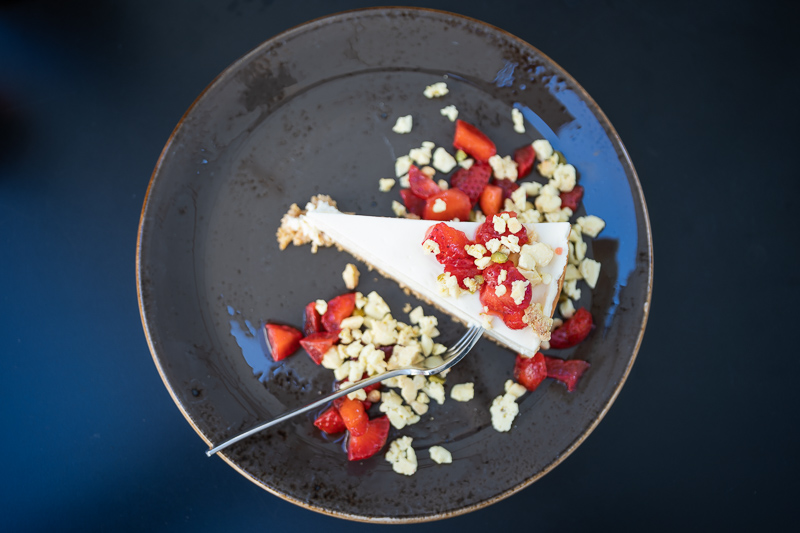
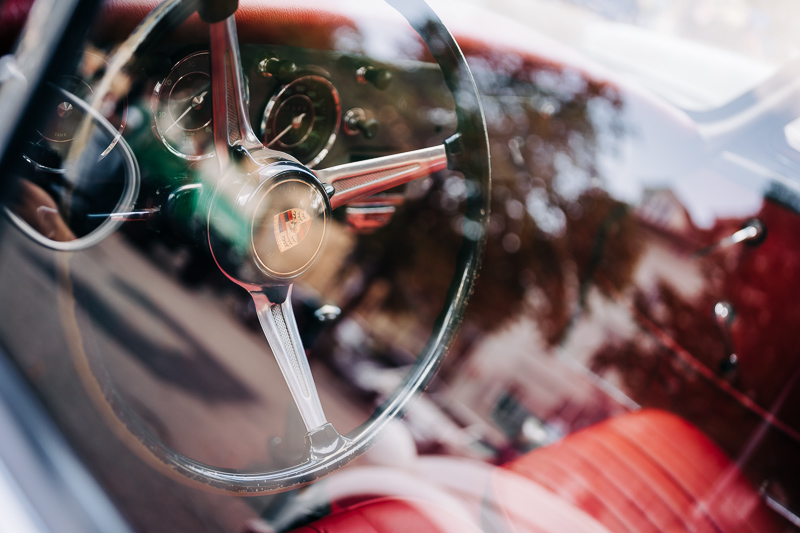
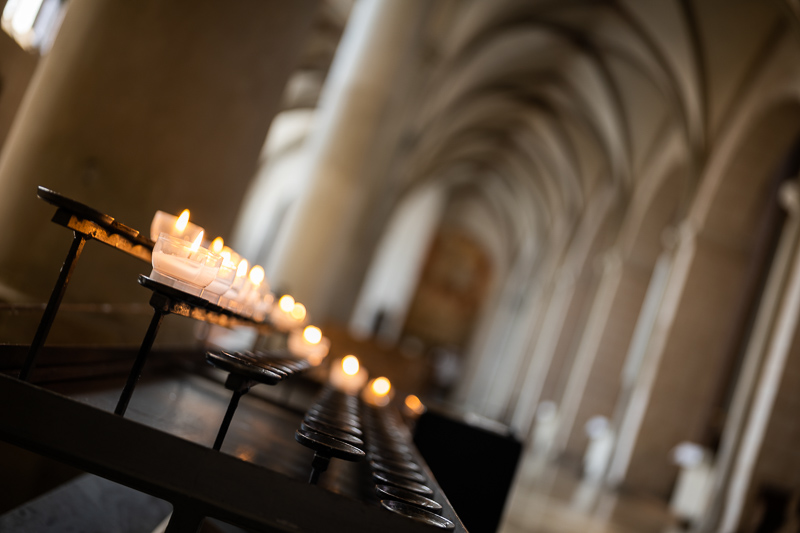
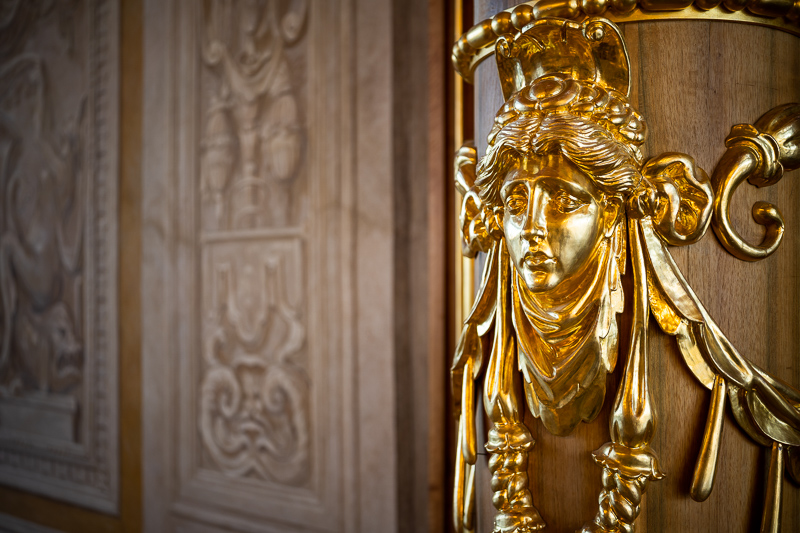
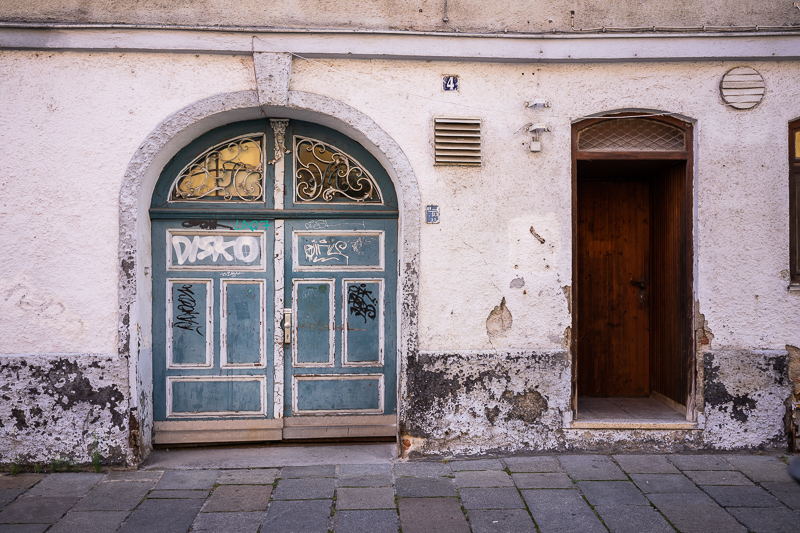
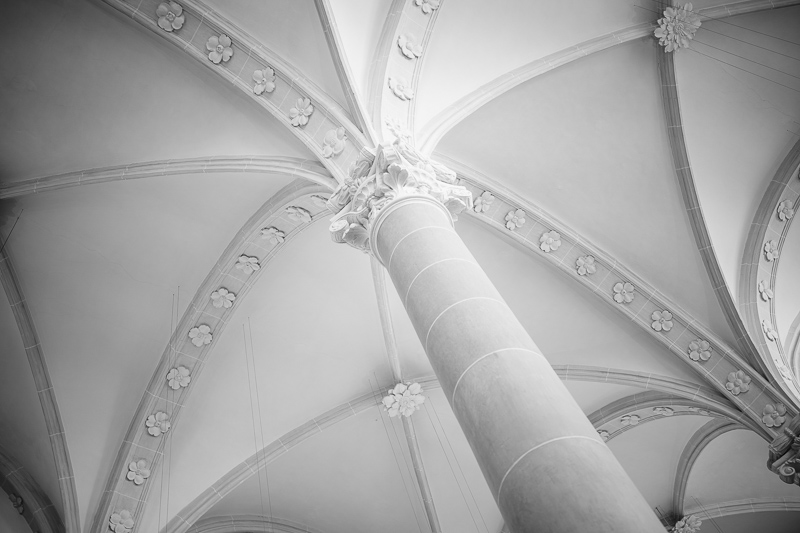
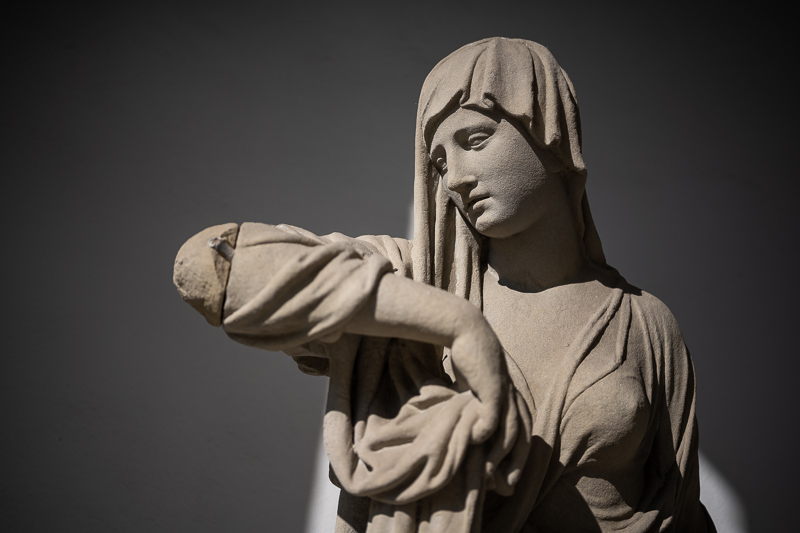
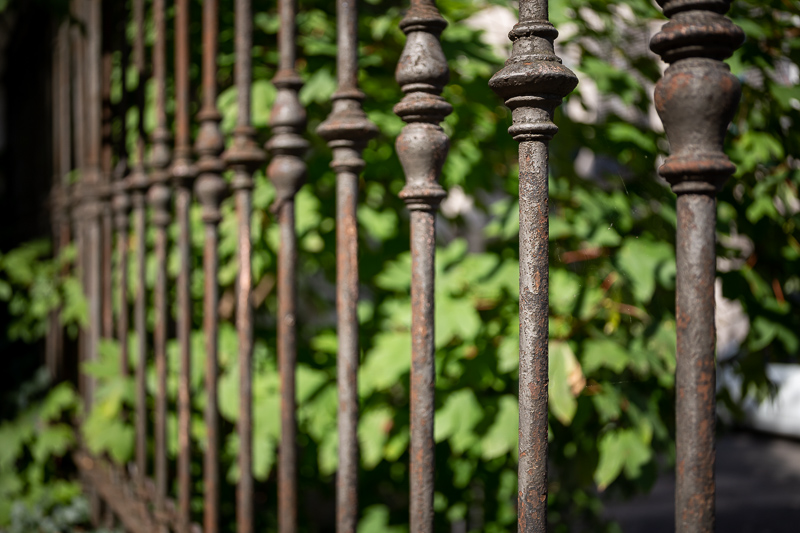
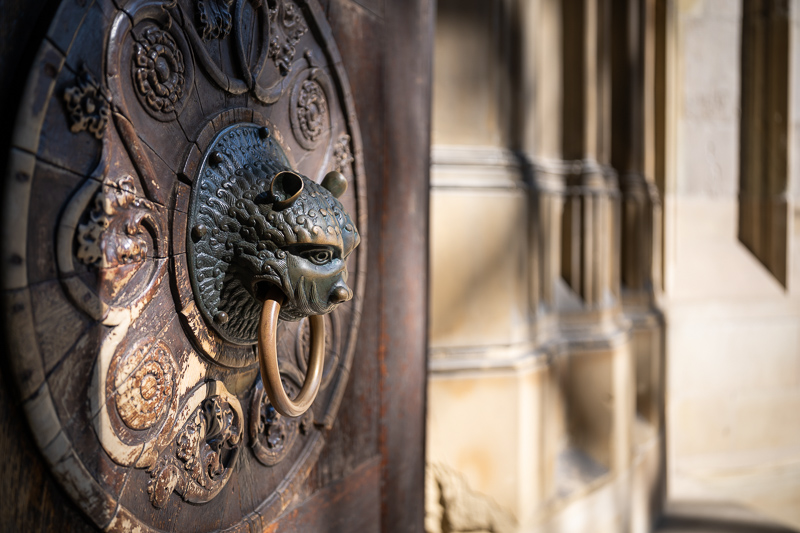
You can find most of the sample images in full resolution here.
Further Reading
- Sony FE lenses: Our comprehensive and independent guide
- Sony FE lenses: Our guide to portrait lenses from 85 to 135mm
- What makes a picture good?
- Lens aberrations explained
Support Us
Did you find this article useful or just liked reading it? Treat us to a coffee!
![]()
![]()
![]() via Paypal
via Paypal
This site contains affiliate links. If you make a purchase using any of the links marked as affiliate links, I may receive a small commission at no additional cost to you. This helps support the creation of future content.
Latest posts by BastianK (see all)
- Analogue Adventures – Part 33: Harman Phoenix 200 - July 24, 2024
- Review: Nikon 200mm 2.0 IF-ED Ai – The first of its Kind - July 21, 2024
- Review: Voigtländer 50mm 1.1 Nokton – Better than its reputation? - July 17, 2024
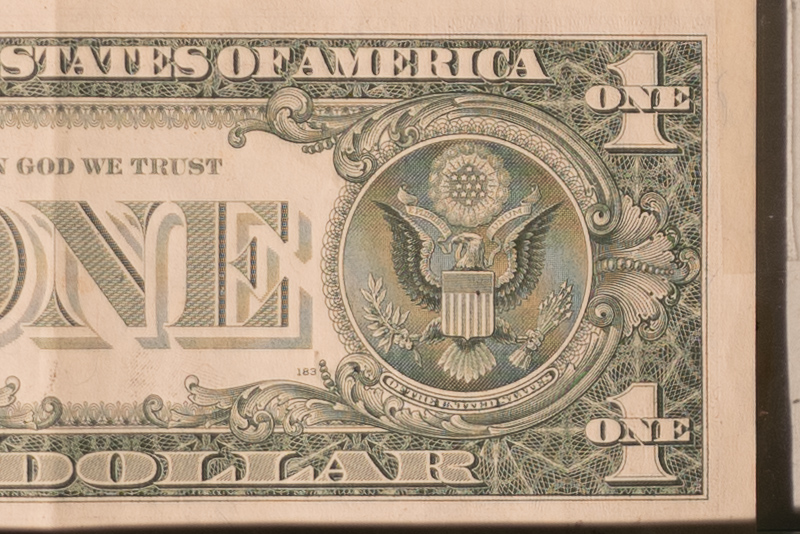
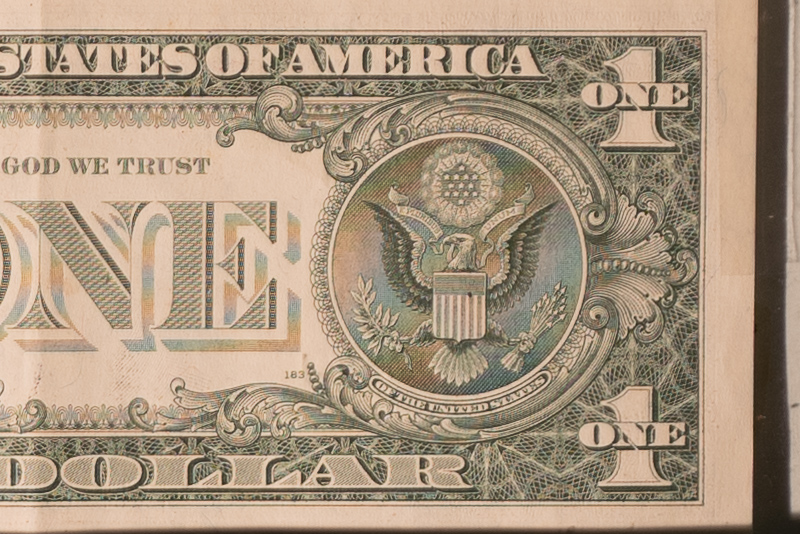
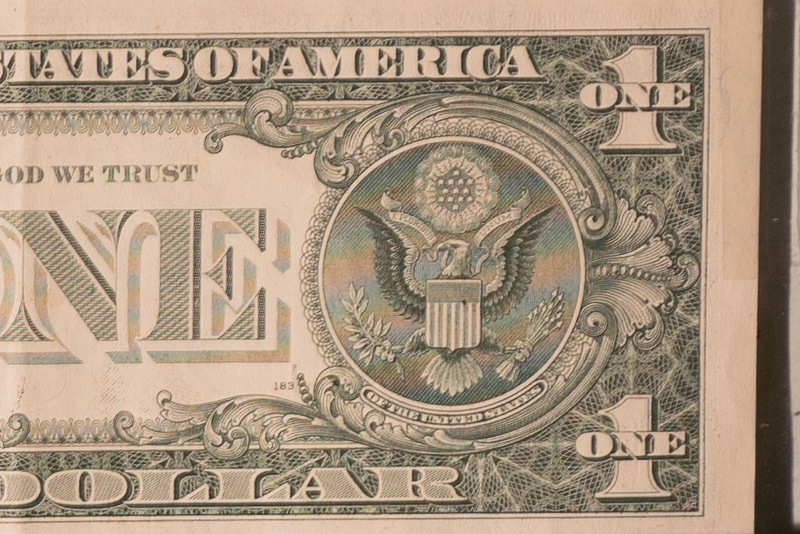
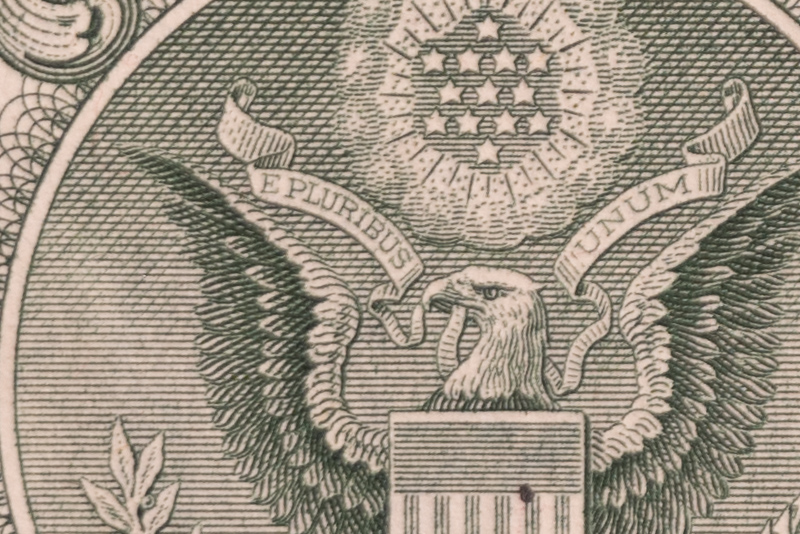
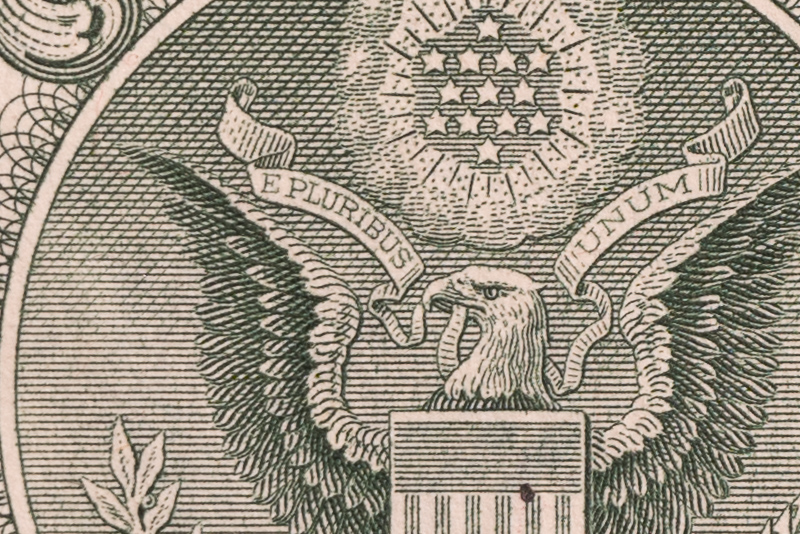


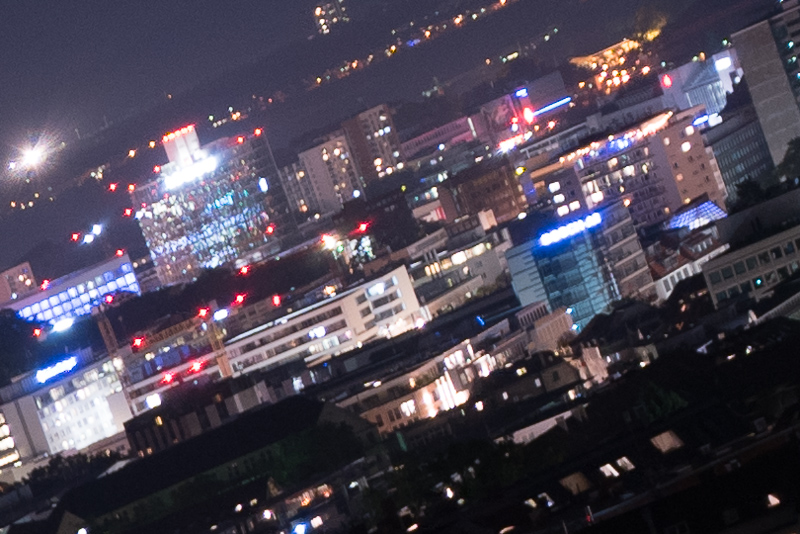
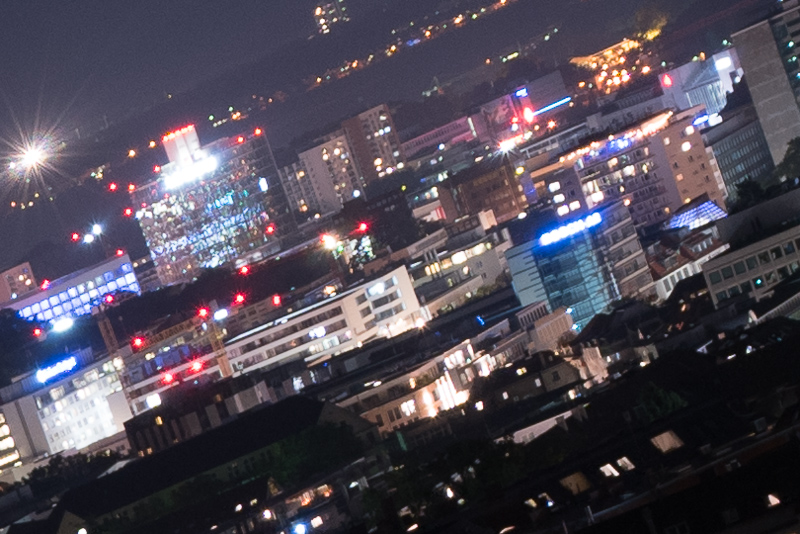

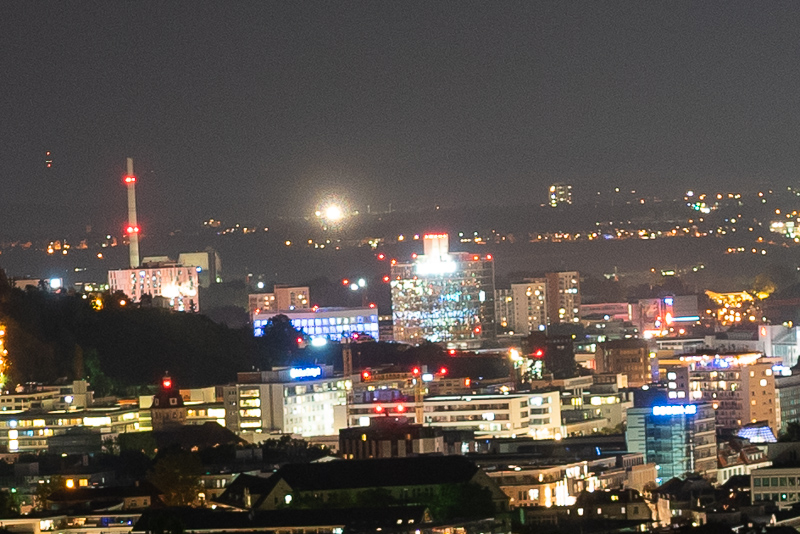
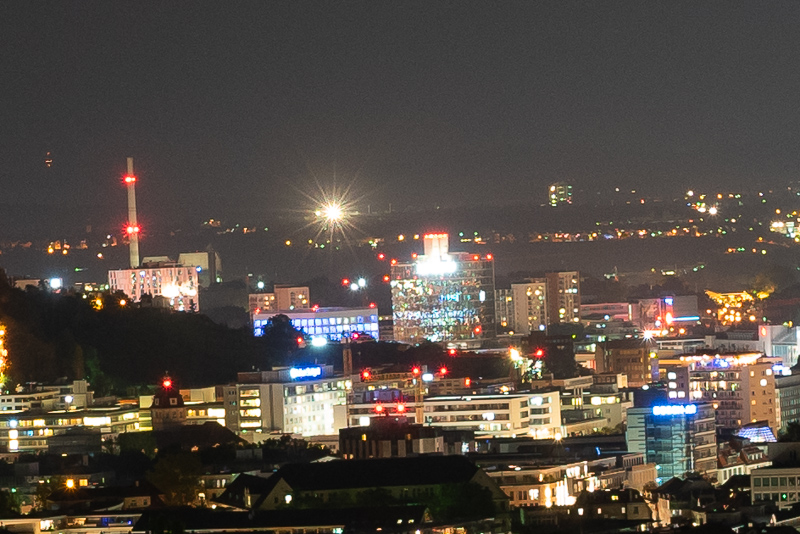

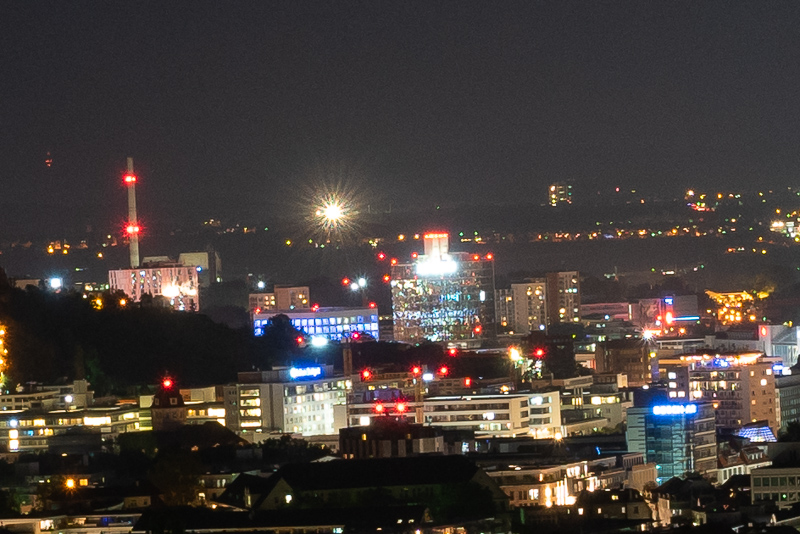
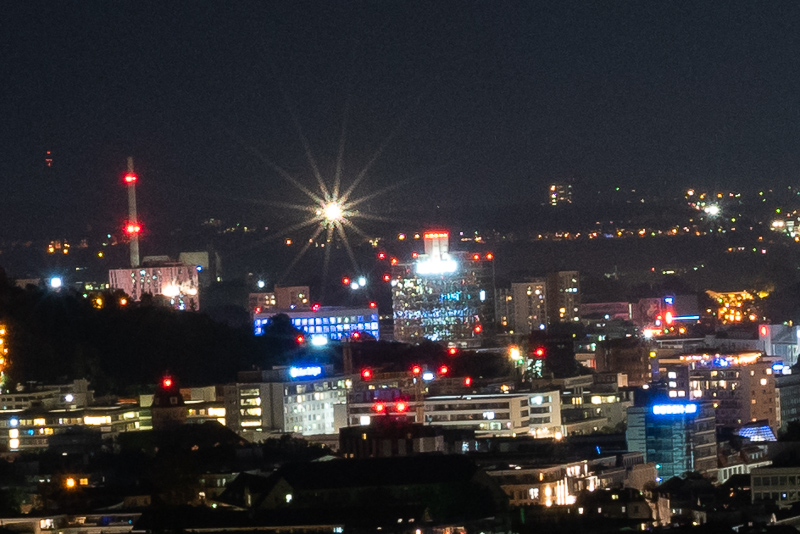
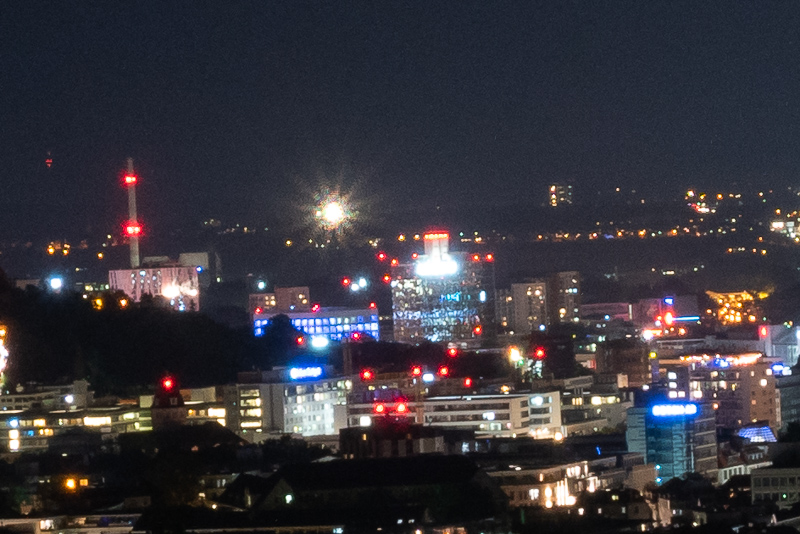
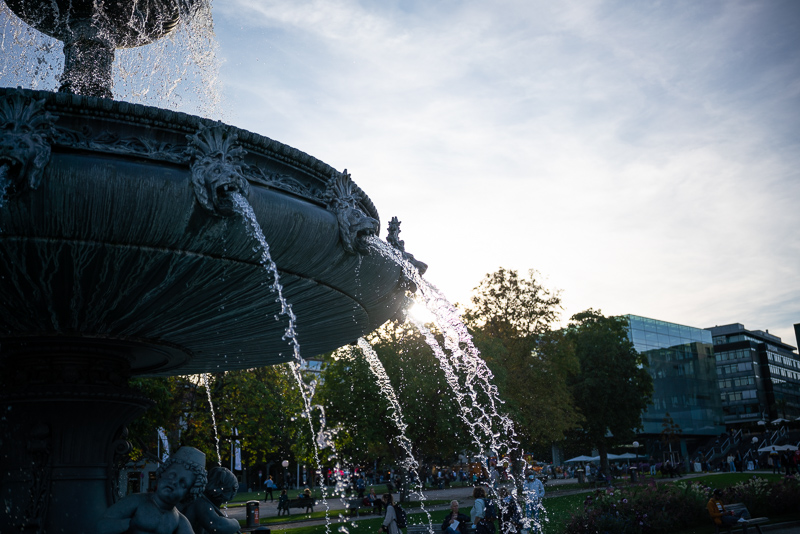

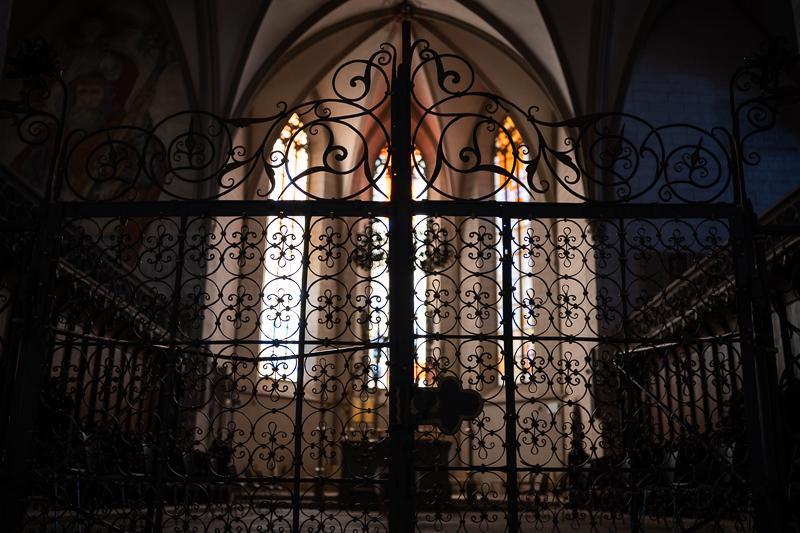

Hi Bastian,
I’m always dying to read your detailed reports, I especially love the 35 lenses like my VM1.7/35 which I bought based on your positive review and never regretted.
It seems to perform much better in some subjects than the Apo 2.0/35 described here.
Like me, many have been waiting for a Sony E version of the VM 1.7/35, but have unfortunately been disappointed time and again.
Thank you and keep up the good work!
Greetings
Klaus
Glad you like my reviews 🙂
The 2/35 “Apo” has less loCA, generally slightly better sharpness at wider apertures and electronic contacts, the latter is the reason I did consider replacing my trusty 35mm 1.7 with it.
But then the question is: do these things outweigh worse bokeh rendering and an “upgrade cost” of ~800€. Answer for myself is: not really.
So I will keep sticking to the 35mm 1.7 + 5m PCX filter.
How about contrast (especially on sunny days) and flare resistance? It’s appaling on the VM35/1.7 with the pcx filter.
Ah, difference in contrast I don’t see something meaningful except for the corner regions where the 2/35 is doing a better job.
Portrait distance I took some samples (of a different note, unfortunately) at same distance and same positioning in my Voigtlander VM 35mm 1.2 III review with the 1.7, so you can compare them.
In terms of flare resistance the 2/35 Apo might be the worst of the recent Voigtländer lenses that I have used, meaning worse than 1.2/35 or 1.2/50.
It isn’t bad, but just not as good as those. The 1.7 on the other hand is a lens that I am not sure I have ever seen producing ghosts at all.
Hi Klaus, i did the same and love it. Do you use a pcx filter?. What converter/camera do you have?
I wonder whether the red highlights that you are seeing are a feature of the lens or a feature of the sensor stack not filtering out enough uv?
Modern digital cameras cuts away all UV light. In other words, anything you see happens in the visual range (400-700nm). Check out this article:
https://petapixel.com/2020/06/04/why-uv-filters-are-basically-useless-on-modern-cameras/
Wow the 3Dness of this lens is awesome. The contrast and colors are very nice as well. The bokeh isn’t bad at all but yeah ofc there is better. I remember the newish sigma 35/2 having better bokeh (but falling slightly behind in most other categories). I do like this lens but I already have a Zeiss Jena Flektogon which, when used correctly, can excel in sharpness, bokeh, contrast and 3Dness. I think the Voigtlander 40mm f1:2 SE better fits my needs and my kit than this lens and probably has better bokeh in most respects so I’m likely to get that. I bought and sold the V 50mm 1.2 because I didn’t like the focal length but I liked the image quality a lot so I think the 40mm 1.2 would be a good fit but I do appreciate this lens
Get someone who looks at you the way Bastian looks at 35mm lenses 😜
Sigma 35/2 looks even better for me now.
Thank you Bastian, Phillip and team for such brilliant reviews.
I tried this 35 APO a few weeks ago but sent it back due to pretty bad CA at all apertures. The retailer said that there can be a lot of variation between CV lenses in general but they had not known any issues before mine with this particular model.
As an aside, the retailer said that Cosina refuses to take lenses like mine back as they claim that they are ‘within spec’. That’s tough on the retailers.
I may well try this one again as the way CV lenses render colour is just fantastic and this one on paper is a compelling landscape lens.
I can tell you already that the VM version shows worse longitudinal CA, at least when I compare both on the same (Sony) camera.
I will have a more thorough look on the M10, maybe the filter stack shows some influence here.
Thanks, Simon, for confirming my suspicion about sample variation. The sample that LensTip.com had for review appears to perform much better than the one Bastian got. I just checked and there is only a tiny bit of LoCA visible in some sample images – not nearly as much as we see in the sample used here.
I have the Nokton 50mm f/1.2 Asph VM which also appears to have quite a bit of sample variation, based on the reviews I have seen and my own images. My sample is obviously a stellar one. (It is by no means an APO lens, though, just to make that clear.)
The lenstip loCA test is quite an easy one only really bad lenses (like 35mm 1.8) will fail.
It is very similar to my close distance test where the lens looks much better than at actual working distance.
Check the sample images. There are a few shot at normal / longer distances that appears to show better performance than your test copy:
https://www.lenstip.com/610.12-Lens_review-Voigtlander_Apo_Lanthar_35_mm_f_2_Aspherical__Sample_shots.html
The image with a statue of a man with hat (file names ending with fot02 and fot03 respectively) looks much better than what I see in your tests. Also, fot22; the statue of a woman holding the atom symbol(?) looks quite free of LoCA too. The image of the mailbox shows a bit of LoCA though.
(By LoCA I here refer to color fringing in out of focus areas.)
In the image sample “fot15”, the points on top of the bar holding the sign saying “Same Fusy” show obvious purple fringing against the windows too. Hmmm…
Have you considered having a friendly debate with dpreviewTV which hates the 35mm focal length. I would love to see that.
Great review as always. Love the photos.
However, a big disappointment is the lack of direct comparison to Sony 1.4GM, which is in the price and weight range. I totally love my 50mm APO, but I really have a hard time justifying this one on E-mount. I guess one big plus is the much better MF experience. Makes a lot more sense on Leica due to lack of competition (Leica’s APO is just way too expensive.
Perhaps an updated review in the future with GM comparison?
Fred Miranda made some useful comparisons of the Voigtlander 35mm APO and the Sony 35mm GM:
https://www.fredmiranda.com/forum/topic/1695782/17#15580981
https://www.fredmiranda.com/forum/topic/1695782/23#15586391
Of course, it’s possible to make approximate comparisons with images from different days, as here:
https://phillipreeve.net/blog/review-sony-fe-35mm-1-4-gm-the-perfect-35mm-lens/#infinity_42mp_Sony_A7rII
https://phillipreeve.net/blog/voigtlander-35mm-2-0-e-review/#infinity_42mp_Sony_A7rII
I enjoy the Voigtlander 35mm for landscape photography. It seems that the (autofocus, faster, larger, and heavier) Sony GM would be a better general purpose lens. FWIW, I think that the 50mm APO is also a fine lens for landscape work, but I prefer it to its 35mm counterpart in more general use.
Thanks again for the great review, I have the 50/1.2 (street, general) and 50/2 APO (landscape, architecture), needing a similar pair at 35mm for a7riii, have read all articles on site, wondering what you think would pair well with this 35/2 to cover street, general, usually in b&w?
Also, have you considered doing an article which covers roughly the “best lenses for black and white”, I feel you are uniquely placed to give some input on this (highly subjective) topic. You know what renders nicely.
Thanks again, Nathan
Is your 50mm 1.2 the Voigtländer or the Sony GM?
If it is the Voigtländer and you are happy with it the trivial option would be to go for Voigtländer 35mm 1.2 SE + 35mm 2.0 AL.
Now for me personally the landscape 35mm for E-mount is (still) the Voigtländer 35mm 1.7 + 5m PCX filter.
For other applications it is the Sigma 35mm 1.2 Art (if I need AF) or lately the Laowa 35mm 0.95 (if I don’t need AF).
When it comes to B&W, I am honestly not that much of a B&W shooter, so I don’t think I can give a good insight here.
Generally I think B&W is more forgiving in terms of exposure as well as editing,
meaning what lens works good for color will also work good for B&W, but there are some lenses that rather suck for color but might still work well for B&W.
Thanks Bastian, yes it’s the voigtlander 50/1.2, it probably spends the most time on my camera although we have quite a few lenses now (I’m fortunate that my wife is a photographer too!).
I’m hoping to add the 35/1.7 soon, along with the 75/1.5 and the 50/1.5, I’m a sucker for the manual voigtlanders on a7rii/iii, there’s something about the rendering and tonality that I love. Just wish they’d make a good new tele manual, missing the longer lengths in my bag.
Noted re B&W, I shoot b/w then raw for color if needed, I find that if it works in bw straight out of the camera, the color raw is nearly always perfect, as I prefer not to edit, spend too much time on pc for work as it is.
Thanks again, for taking the time,
Nathan
Next review will be Voigtlander VM 50mm 1.5 II, maybe you will be interested in that one 🙂
Yes!! It is actually my biggest want and biggest question
Voigtlander 50/1.5 vintage line or ii, SC or MC, or zeiss 50/1.5 c-sonnar – the entire reason I chose the voigtlander 50/1.2 to start was because I couldn’t decide between the aforementioned then saw your review.
50mm 1.5 II MC is similar to 50mm 1.2.
The 50mm 1.5 Heliar Classic renders more like the 35mm 1.4 Classic.
Ahh thanks for clearing that up, have the 40/1.4 classic already so pointless. I’ll eagerly await your review.
FWIW, it’s your conclusion section, alternatives, and additional photos which usually sell a lens to me and my wife, the other info and technicals tends to be available elsewhere, but seeing the shots and reading the thoughts and alternatives is the bit that’s high value (to us)
Thanks for the feedback!
I will gladly keep that in mind 🙂
Thanks for the thorough and thoughtful review as always Bastian. I was interested in this lens, but I expected better flare resistance specifically—CV did better with the 35/1.7 which is wonderful for shooting heavily backlight scenes which I often do. I am surprised you have the bokeh an “average” as it really only seems smooth at near distance which is really the effect of FL + Aperture mostly, and even then cat’s eye. Middle and longer distance looks rough (I understand it’s the nature of such high correction).
I think I’ll just pick up the smaller, cheaper, more flare resistant and smoother drawing 35/1.7 where across the frame IQ is quite good WO, though maybe not quite as good. Of course, it doesn’t have the coma, exif and such. I am curious, are you keeping your CV 35/2 APO?
It is a loaner and I have no intention anymore to buy it.
Will stick with VM 35mm 1.7 + 5m PCX.
Thanks for the excellent review as always! Been waiting for this one.
Thanks for a fair and knowledgeable review.
I’d find the abrupt transitions of aperture stars to no stars, from stop to stop, confusing and frustrating in the field. And sometimes I want stars at f/4, and at all apertures up to f/16.
In this focal length range I’ll stick with my selection of the Loxia 35, Batis 40 (for close focus, moving subjects, wet weather) and the CV APO 50. When I wish for apertures stars, I exclude the Batis. If only the Batis made good stars, I would not carry the Loxia 35 and CV APO 50.
Hi Bastian,
Still struggling to find a converter that focus to infinity with my beloved vm35 1.7 and 5m pcx argh…
thank you for saving my money…
Thank you very much, Bastian, for your review! As always it is excellent, both sensible and and accurate.
I have wondering for a while if I should replace my Loxia 35 by this new 35mm Apo-Lanthar (only when I can spare enough money, of course ;–). Your review shows that the Apo-Lanthar is not as perfect as I would have expected; and because I use the Loxia mostly at f/8 to f/11 for landscapes and architecture, there is no pressure to replace it.
Nevertheless some day I should try it. For landscape and architecure, the Loxia 35 was stellar at smaller apertures on 24 Mpx and still very good on the 42 Mpx of an A7R II. Now I have switched to a used A7R IV (to be honest, mostly for the excellent viewfinder ;–) and the Loxia 35 begins to show more deficits. Here the Apo-Lanthar would probably a good solution if one wants to get most out of the 61 Mpx sensor of that camera.
Already on 42 mp some of the more recent good 35mm lenses look better in the corners than the Loxia,
so I am not surprised these differences will be more obvious on 61mp.
You summarized my feelings quite well: the 35mm AL is an update over the Loxia,
but not as big as e.g. the Sony FE 35mm 1.4 GM is over the Sony FE 35mm 1.4 ZA.
So a worthwhile update, but not a “crucial” one 🙂
Thanks as always for the amazing reviews.
I’m one of those landscape-shooting Loxia 35/2 owners whom this lens is targeted at. The comparisons covered in the review lead me to want to upgrade, mostly for the high-resolution-sensor corner sharpness. But like many people reading this review, this lens isn’t as big of an upgrade as I was hoping for.
The decision to buy or not, for me, hinges on my question. I am also very curious about focus breathing compared to the Loxia. I sometimes do focus-stacking, and I find the Loxia to be essentially unusable for that application, because the focal length shift is so severe. How does this lens fare in that regard? Thanks in advance!
Focus breathing is not something I usually check for and I don’t have the lens with me anymore,
maybe some other owner can shed a light on this?
Voigtlander 35mm f2 on my Sony A7RIII producing excellent images in terms of beautiful colours and resonance. Manual focusing; easy-peasy. Replaced my Sony Zeiss 35mm f2,8.
Note: Voigtlander 65mm f2…..as my next lens. Or new Tamron 28-75mm f2,8 short zoom?
Honestly I tried the Tamron 28-75 and it was mediocre. Sub par bokeh, colors and contrast. At least it took decent landscapes stopped down. I haven’t tried the voigtlander 65mm f2 but I have the Nokton 58mm f1.4 for F mount (about $400 used) and it’s better than the Native Nokton 50mm 1.2 imo (though they excel in some different qualities). Adapted to sony, It’s roughly about as small as the 50mm. I think the 58mm stopped down to f2 will have better bokeh than both the 50mm and the 65mm at the same aperture and it’s much cheaper than both. I recommend that. Honestly if I were you I would get the 58mm 1.4 and the 110mm 2.5. The 110 2.5 is about the same size as the 65mm but it can do 1:1 and then you have the 58mm as an excellent portrait and normal lens.
Voigtlander 110mm f2,5 just got promoted over Tamron after reading comment by Scott. Firstly to replace my Fuji 50mm f2 with new Fuji 33mm f1,4 with improved auto focusing.
Usually avoid 50mm standard lens but will make an exception if buying new Fuji 33mm f1,4 as already own Fuji 16mm f1,4 a prime lens with guts; if that makes any sense?
Can recommend voigtlander 65/2, exceptional every day lens, my wife uses it as default go to lens and it produces wonderful results, even against strong competition
I feel like camera / lens reviewers have all slowly agreed with each other on establishing views on what “correct” or good bokeh should be as opposed to “bad” / “busy” / etc bokeh.
And it all feels wrong and subjective. This bokeh looks amazing. IMO it looks better than the Sigma 35mm 1.2 and my 35mm 1.4 GM.
Hello Bastien
I have the impression that the model you present has problems!. I own it, and the vignetting, although there is some, is not as severe on my model.
Probably you see less vignetting, because you have the automatic correction in camera and/or in your software turned on.